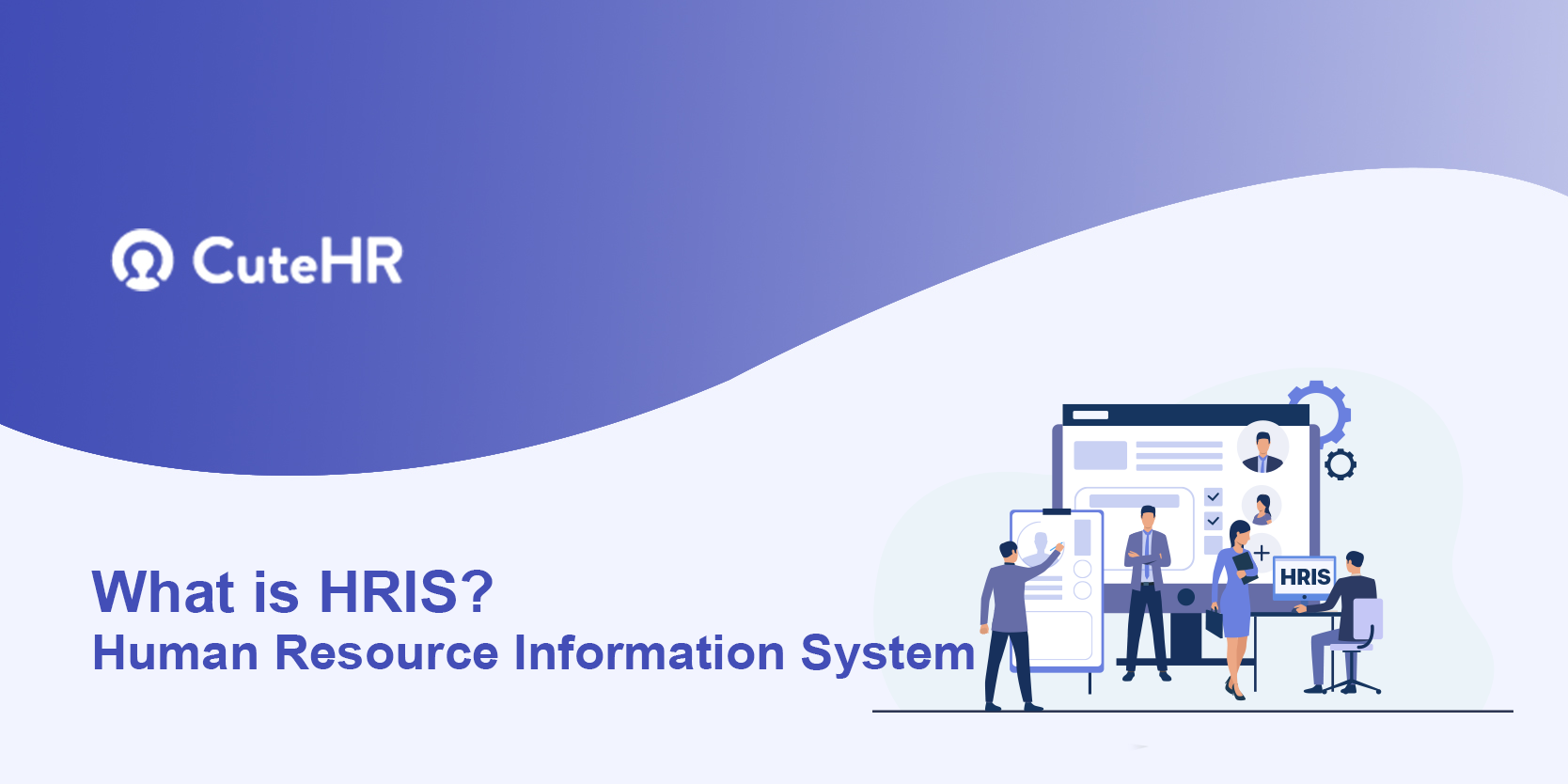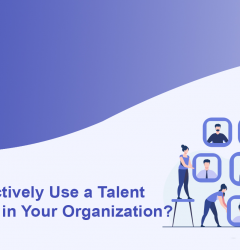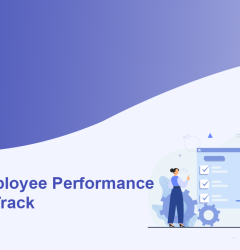15 Mar

Did you know? 98% of companies were considering a cloud-based HRIS. The most often used software in human resources is a Human Resources Information System (HRIS).
In this blog, we will provide an outline of what an HRIS is, its primary functions, and all you need to know to have a fundamental grasp of the HRIS.
Table of Contents
What is HRIS?
An HRIS, sometimes known as a human resource information system or human resource management system (HRMS), is essentially the convergence of human resources and information technology via HR software. This enables HR operations and processes to take place electronically.
To put it another way, an HRIS is a software-based system that allows firms large and small to handle a variety of operations such as human resources, accounting, management, and payroll. This system enables a firm to better efficiently plan its HR costs, as well as monitor and control them without allocating too many resources to them.
In most circumstances, an HRIS will also result in greater efficiency when making HR decisions. The quality of decisions taken should also improve, and as a consequence, the productivity and effectiveness of both employees and managers should improve.
What is an HRIS System?
This system is composed of two pillars that serve as the foundation for managing people and policies to enhance overall organizational success.
Organizational Design
From a structural perspective, HRIS consists of roles, functions, and reporting hierarchies. This system offers identifiable responsibility and a roadmap for operational functionality and consistency by establishing the organizational structure.
The correct system assists you in addressing business difficulties by assisting you in putting the right personnel in place. Your HRIS can assist you in building a workforce that has the appropriate people with the right capabilities working in the right roles and under the right structure to fulfill your business goals by providing consistent, automated management of acquisition and recruitment data.
Employee Data Management
The HRIS gives a full picture of every employee, including name, address, date of hiring, pay, benefit options, and much more, similar to customer relationship management but inside an employer/employee scenario. With the appropriate data, you’ll be able to engage with your employees more effectively, assist them in developing career goals, finding the correct training, and taking their performance to the next level.
The HRIS allows for automated and uniform record keeping, reporting, and self-service features. This may result in more accurate and up-to-date information management, which promotes higher productivity while also providing employees with convenience and simplicity of use.
Benefits of HRIS
The human resources department in any corporation is seen as crucial to the overall success of the organization. Its several activities assist the organization by offering anything from skilled and talented labor to management training services, employee enrichment programs, and more. Because labor is the single largest expenditure for most firms, human resources assist businesses in maximizing the value of this critical asset.
Human resources departments, on the other hand, must have the necessary tools and resources in place to work efficiently. An HRIS can be used within the department to assist human resources personnel and management in improving their productivity and the outcomes of their efforts.
1. Compliance
Certain data is collected and stored for compliance purposes. This comprises material for identifying workers in the event of theft, fraud, or other misbehaviors, first contact information in the event of an accident, citizen’s identity information for the tax office, and obligatory certification expiration dates. All of this information might be preserved in the HRIS. Data must be maintained properly and securely in accordance with GDPR rules.
2. Record-keeping
A human resource information system (HRIS) is a record-keeping system that keeps track of any changes to employee-related information. When it comes to personnel data, this system can be considered the one source of truth.
3. HRIS Human Resources Strategy
The HRIS enables the tracking of data required to establish HR and business initiatives. Various data will need to be tracked depending on the organization’s aims. This is where the system shines.
4. HR self-service
Another benefit is the ability to give self-service HR to employees and managers. As a consequence, employees can handle their affairs. When implemented properly, the HRIS can deliver a great employee experience. Remember that not all HRIS systems give this in an easy-to-use format!
Using an HRIS has several benefits for the firm, HR, and the person. Using this system becomes appealing when you have between 30 and 50 workers.
Managing this fundamental information in Excel has become difficult at this point, and simple procedures such as granting staff holidays must be standardized.
Using an HRIS is particularly advantageous for large firms, which often utilize more complex HRIS systems to serve various HR activities. Smaller businesses may benefit from a more basic system.
5. HRIS Benefits Administration
Enrollment, notifications, adjustments, and reporting might all fall under this category.
6. Reduced Paperwork
To begin with, recruiting managers do not have to fill out hundreds of different physical forms daily. They may use the program to store digital resumes, applications, and other papers. The same is true for continuous employee assessments when they do not need to fill out lengthy paperwork. The same may be said for attendance, leave management, and time management. Less paperwork implies fewer workers are needed and improved efficiency.
Employee motivation is maintained when salaries are paid on time. Salaries must be computed precisely and quickly so that they may be dispersed on a pre-determined day like clockwork. HRIS systems assist businesses in automating this vital activity, minimizing their reliance on finance.
7. Quality Hiring
Many times, businesses fail to contact the ideal applicants because their CVs become buried in physical files. Hiring managers may use HRIS solutions to shortlist applicants for future positions, interview them when a job opportunity comes, and smoothly finish the onboarding process. Furthermore, because all of the managers’ remarks are documented in the system, there is a high level of openness, which leads to excellent hiring.
8. Data Safety
Because you have employee information in one location, you must ensure that it is truly secure. As a result, select only the best HRIS systems from reputable vendors. It is very vital in the COVID-19 era for individuals to work from home and access their work system from their home computer.
Disadvantages of HRIS
- Input errors caused by human error
- Updating your system is expensive
- Applications that do not support your human resources needs
- It is difficult to locate a qualified specialist in the human resources functional area.
- Access that is not authorized
- Knowledge of a particular field
- Errors in data entry
- Small businesses may be unable to afford the cost per hire for another employee in a specialized field.
Features of HRIS
There are several types of HRIS systems and software. Because an HRIS includes all HR functionalities, all individual functionalities are included in the system. Among these features are:
1. Applicant Tracking Software (ATS)
This program takes care of all of the company’s recruitment needs. It keeps track of candidate information and resumes, enabling recruiters to match job opportunities to qualified individuals from the company’s application pool and aids in the recruiting process.
2. Payroll
Payroll automates the process of paying employees. Contractual data and information on recruits are frequently put into this system – sometimes in conjunction with time and attendance data – and payments orders are generated at the end of the month.
3. Attendance & Time
This module collects employee time and attendance data. These are especially important for shift workers who clock in and out. Employees used to write down their working hours on a sheet of paperback in the day.
The manager would then manually enter the data into a time monitoring system. Payment orders were prepared and distributed to all workers based on this information. Nowadays, employees frequently check-in using their fingerprints or a card that is synchronized with an HRIS. This gives you an exact arrival and departure time. Any lateness concerns are immediately identified.
4. Training
When it comes to human management, learning and growth are key components. This section enables HR to track workers’ qualifications, certification, and abilities, as well as an explanation of available courses for corporate personnel. This module is known as an LMS or Learning Management System when used alone. An LMS often comprises e-learning and other courses that employees must complete.
5. Managing performance
People management relies heavily on performance management. Performance ratings are created once or more times a year by the employee’s immediate boss or peers.
6. Succession planning
Another critical component of an HRIS is the development of a talent pipeline and the availability of substitutes for important jobs within the business.
7. Analytics and reporting
Reporting and analytics are considerably uncommon elements in these systems. Modern technologies allow for the automatic compilation of HR reports on a variety of issues such as employee turnover, absenteeism, performance, and more. Analytics entails analyzing this information to make more educated decisions.
Examples of HRIS Systems
So, what are some examples of HRIS systems? There are three system software samples to consider:
A human resource information system (HRIS) is a system that handles people, policies, and processes.
- HCM: Human capital management encompasses everything that an HRIS does, but additionally incorporates talent management and worldwide aspects (such as multi-currency, multi-lingual, and localization options).
- HRMS: The human resource management system combines key components from HRIS and HCM. This includes managing your rules and processes, as well as various language features and talent selections.
The type you should choose is determined by your business. But don’t underestimate the value of having a system in place—they truly do give some amazing real-time automation tools.
For example, our HR software contains a variety of functions. A list of HR software may look something like this:
- Staff vacation planner: Easily manage your workforce’s yearly leave needs.
- Sick leave and tardiness: Keep an eye on difficulties with employee punctuality.
- Shifts and rotas: Use simple tools to create your work schedule.
- HR document storage: Store your data safely and indefinitely online.
- Advice on employment law: You may get assistance on any subject right now.
- Advice on health and safety: Ensure that your company complies with all applicable legislation.
- Employee assistance: Assist your staff.
- Time off in lieu (TOIL): Easily manage your computations.
- BLIP: A HRIS program also offers clocking in and clocking out software for you and your employees.
This software streamlines the process, saving you time while also delivering real-time data and staff communications tools.
Implementing HRIS in Six Crucial Steps
When it comes to HRIS implementation, we may write several articles. We shall present a high-level summary in this post. The process of implementing software may be separated into several stages.
1. Search
Begin your implementation by determining what your various stakeholders require from an HRIS. You can compile a list of prospective suppliers based on these specifications. You may then request bids from these service suppliers. Ideally, at the conclusion of this step, you will have selected a suitable HRIS supplier.
2. Plan and Coordinate
During this phase, you will select an implementation partner, form a steering committee, and assemble an implementation team. The steering committee is typically comprised of senior delegates from your selected HRIS supplier, your organization’s HR director, the internal project manager, and preferably a senior user from your business (optional). The major role of the implementation team is to work on the day-to-day duties that arise as a result of the implementation.
3. Communicate and Train
You will need to develop a training program for your technical personnel, a communication strategy, a Frequently Asked Questions website, and other support papers before going live. You will need to develop a training program for your technical personnel, a communication strategy, a Frequently Asked Questions website, and other support papers before going live. When it comes to the FAQ, consider using a website builder for a more professional approach.
4. Deploy and Maintain
You may formally launch your HRIS if all of your support processes are in place. Remember to collect feedback regularly and to keep your training materials up to date with the changing systems. Constant, precise communication is essential in this situation.
Reporting and Analytics in an HRIS
All of these systems have one thing in common: they were built to be transactional systems. They are databases that maintain track of the transactions of a company. When new employees join the firm, this is an example of a transaction.
A new employment record is created, and the individual is marked as ‘active.’ If a worker departs the firm three months later, a new transaction is recorded, and the worker’s status is changed to ‘terminated.’
Because these systems are built as transactional systems, they perform poorly in data reporting and analytics. They were simply not meant for this. Furthermore, not all HRIS systems provide all of the aforementioned functions.
Some functions, such as payroll, LMS, or ATS, may also be recorded in third-party systems. This complicates HR reporting even more because data is distributed across numerous platforms. To report data, a new layer must be put on top of all HR systems in order to report and evaluate HR data.
This is the second reason for the limited practical usage of reporting and analytics for these systems. Be careful of this while speaking with HRIS vendors since they frequently promote their systems’ superiority in data reporting and analytics.
Types of Human Resource Information System (HRIS)
1. Operational HRIS
The manager benefits greatly from operational HRIS. It gives all of the information needed by management to make routine and repeated human resource decisions.
- Employee Information Systems
- Positioning and Control Systems
- Systems of Performance Management
2. HRIS Tactical
The tactical human resource information system primarily aids managers in decision-making on resource allocation.
- Information Systems for Recruitment
- Information Systems for Pay and Benefits
3. HRIS Strategy
Strategic HRIS focuses on managing labor negotiations, workforce planning, and specific HR programming.
- System of Workforce Planning
- Software for a Specific Human Resource Information System
4. Complete HRIS
This type of automation has resulted in an integrated database that works with human asset records, employee documents, employee roles, stock records, organizational policies, employee monitoring, and a variety of other human asset records. They are built in such a way that applications may simply project genuine reports from any area of human resource management.
Wrapping It Up
The workplace is changing rapidly as automated technologies improve. Humans are increasingly collaborating with technology in ever-more sophisticated ways. While this has numerous corporate benefits, one of the drawbacks is that it dehumanizes the workplace.
In the HR sector, ironically, technological innovation is offering the potential to change the HRIS from an impersonal people-data management system to one that creates a more human experience in the workplace.
The HRIS of the future will be more helpful and intuitive, allowing employees to achieve their goals more easily, quickly, and effectively.
These systems will utilize AI and machine learning (ML) to “detect” what employees are attempting to do and will provide proactive solutions ranging from changing an address to enrolling in the appropriate training choice.
HRIS innovations will become more controllable from a back-end operational standpoint. Upgrades and new releases will be easier to install and more targeted to the demands of the consumer.
Organizations that incorporate new and emerging technologies into their HRIS will be a part of the movement to change the workplace into a place where technology and people collaborate to generate better outcomes for all.
The HR function is key to this transition. So, this was it for this article I hope I was able to make you understand what is
HRIS, its advantages, and a lot more.
Frequently Asked Questions (FAQs)
What exactly is an HRIS analyst?
The HRIS analyst assists with this system. This involves investigating and resolving problems as well as acting as an interaction with other firm departments, such as finance and payroll.
What exactly is SAP HRIS?
SAP stands for Enterprise Resource Planning. These are systems that maintain track of a company’s resources, which include financial assets, orders, and personnel, among other things. Success Factors is the name of SAP’s HRIS module.












Himani